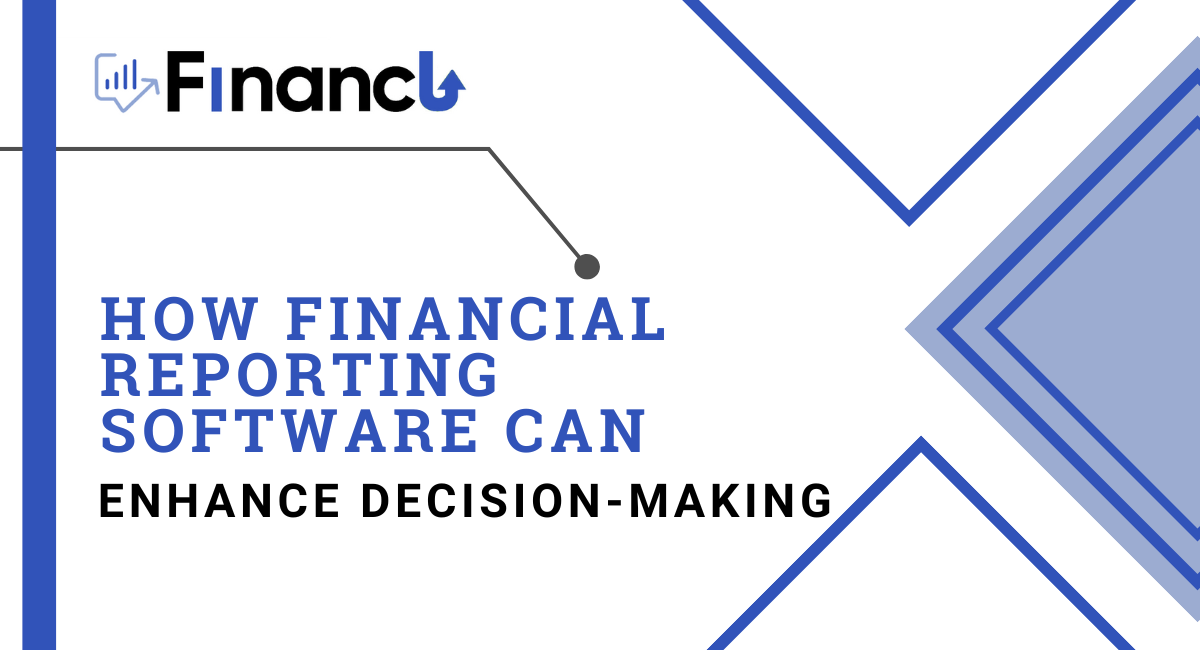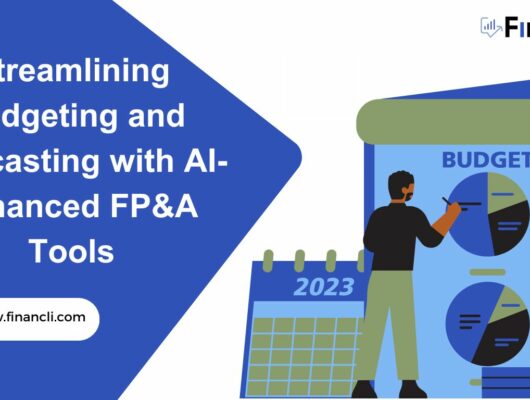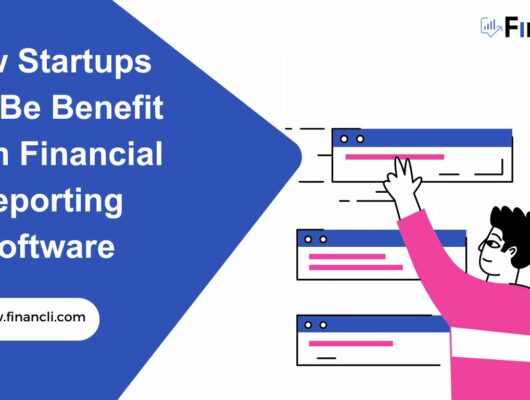
The business world is getting quite competitive. In an environment where countless competitors are waiting to take your place, as a business, you must avoid making serious mistakes, especially in money matters. Financial reporting software is a lifesaver for all businesses now.
The financial reporting software can enhance decision-making by providing accurate and timely financial information. In this blog post, we will discuss how financial reporting software can improve decision-making and the benefits it can provide to organizations.
1. Real-time Insights

Staying updated with your financial information is the key to surviving the challenges and rapid market progress. As a business owner, you must have your finances at your fingertips. Financial reporting software provides real-time financial data, which allows decision-makers to make informed decisions quickly.
Real-time financial reporting serves all purposes, from detecting possible losses to using current financial information for future planning. Financial data help identify problems early and take corrective action before they become more significant. This can help prevent financial losses and ensure the organization’s financial health.
Real-time financial data can also help with forecasting and planning. Decision-makers can use the data to predict future trends and adjust their strategies accordingly. Better decisions on time can ensure the long-term success of the organization.
2. Revenue Projections

Businesses don’t only need current information. They need estimates and predictions to foresee their business’s progress so they can plan accordingly. Fortunately, financial reporting software has the capability to offer just that.
The latest sophisticated financial reporting software has the potential to estimate how much revenue your business is expected to generate based on current data. As a result, revenue projections are a good way of predicting business performance in the future if things continue in the current pattern.
Revenue projections are especially important for startups. It helps them make data-driven decisions. Additionally, they can present their revenue projections to potential investors and stakeholders to attract investment and partnerships.
3. Customizable and Personalized Reporting

A key feature of smart financial reporting software is that users can generate custom reports. By customizable, we mean they can directly add metrics and areas they wish to focus on.
Customizable reports save time and effort for business owners and decision-makers who can quickly review their required data without sifting through piles of financial information and sorting relevant data.
For example, if a decision-maker needs to know the profitability of a particular product line, they can create a customized report that provides this information. This can help identify which product lines are profitable and which are not, allowing the organization to make changes to improve profitability.
Therefore, financial reporting software can provide customizable reporting, allowing decision-makers to create reports that meet their needs. Customizable reporting can provide more detailed and accurate information, leading to better decision-making.
4. Data Visualization

Presenting data in easy-to-understand, interactive forms such as graphs, charts, pie charts, or lines, also known as data visualization, is convenient and prompts quicker decision-making.
Data visualization tools can help decision-makers to identify trends and patterns in financial data that may not be apparent from looking at tables of numbers. This helps identify opportunities and risks, leading to better decision-making.
Financial reporting software has data visualization features that allow decision-makers to see financial data more easily. Incorporating data visualization features in financial reporting software enables the identification of trends, patterns, and anomalies in financial data, which can be crucial for effective decision-making.
Additionally, these visual representations facilitate communication and understanding across various departments and stakeholders, promoting collaboration and informed decision-making based on a shared understanding of the company’s financial health.
5. Inventory Access

For product-based businesses, updated inventory information plays an important role in driving purchases and expense management decisions. For example, complete knowledge of the exact number of items in each batch or product line lets inventory managers and owners decide how much of which entity they need to restock or how to clear their stock.
Financial reporting software offers a comprehensive inventory management solution to users. With a single click, you can see your inventory, wherever it may be. Thanks to the financial reporting software, access to multi-location inventory is no longer difficult. You can check for products and their quantities across all warehouses.
Accurate and timely information on your inventory allows you to determine whether or not you need to restock particular items. It also encourages further decision-making about introducing new products based on the response of similar existing items.
6. Track Financial Activity

One of the ways financial reporting software speeds up the decision-making process is by providing an almost instant detail of your economic activity.
There are several aspects involved in driving a single business decision. First, business owners must review and analyze their past financial activities and health before diving into further expenses or contracts. Financial reporting software presents concise as well as detailed data on the overall spending habits of a business.
For instance, a cash flow or income statement provides a complete breakdown of all incoming finances. It is a detailed report presenting each incoming transaction’s source, amount, and category. A cash flow statement is a quick understanding of a business’s financial performance.
Not only this, cash flow statements come in handy when making decisions. As a business owner, you need to know how much cash you have and how much is expected to arrive so that you can plan your expenses or purchases accordingly.
Similarly, balance sheets are useful when you want a complete breakdown of your revenues and expenses. A balance sheet tells you how much you spend, where, and how much your business generates. It helps review financial spending, improve marketing in low-performing areas, plan for investments, and even look for better potential to boost business performance.
Nowadays, financial planning and analysis software provides unprecedented convenience to users by presenting financial statements in a single, centralized layout. Users no longer have to switch between windows to check for sources or amounts of money they have received. Instead, a single form is easy to access and review.
7. Collaboration and Sharing

Current business dynamics greatly differ from past trends. Business partners operate remotely from multiple locations. Even team members and employees are spread worldwide through centralized remote channels.
Financial information must be shareable for such setups so stakeholders and decision-makers can access it anywhere and give their two cents on present data. Financial reporting software facilitates the decision-making and sharing of financial data. This can help ensure everyone has access to the same information, leading to more consistent decision-making.
For example, suppose a team of decision-makers is working on a project. In that case, financial reporting software can provide them with real-time financial data, allowing them to make informed decisions together. The software can also allow for sharing financial reports and data with stakeholders, such as investors or board members, ensuring everyone has access to the same information.
8. Centralized Financial Reporting

Back in the day, accountants and finance teams had very tough jobs. Their toils were extreme during the audit days or when it was time to compile quarterly or yearly financial reports. Accountants would spend weeks or months compiling transaction details from multiple sources, organizing them in a presentable form, and finally analyzing the collected data.
Thankfully, all this has changed since the introduction of financial reporting software. These intelligent tools have taken over repetitive, tedious tasks. For example, financial reporting software presents centralized data on all business transactions you have made on your company’s account.
Not only this, it presents this data in an organized form and analyzes the information to present current and future trends, all in the blink of an eye. With such convenient automation, we have brains and ideas free to contribute towards financial planning and decision-making.
9. Integration With Other Systems

Financial reporting software has the innovative features of integrating with other systems, such as accounting and Enterprise Resource Planning (ERP) software. This can help to provide a more comprehensive view of the organization’s financial data, leading to better decision-making.
ERP software is an automated tool that “runs” your business. It includes information and handling key business areas such as HR, accounts, marketing, and sales.
Now, if financial reporting software is integrated with ERP software, your accounts, and financial transactions are gathered in one place. Again, we have stressed the significance of centralized reporting for quick decision-making and brainstorming. The integrations of the financial reporting software provide just that.
For example, suppose financial reporting software is integrated with ERP software. In that case, decision-makers can access data on inventory levels and production costs, allowing them to make informed decisions about pricing and product development.
10. Quick Decision-Making

Finally, every section of the impact of financial reporting software manifests into a single one: reduced decision time.
With all the facilities and utilities that financial reporting software provides, teams and business owners can make quick decisions. They do not have to wait endlessly for the reports to compile, attend meetings that go on for eternity to know their revenue or travel across the world for a single review meeting.
A financial reporting software skips all the delays, clears all obstacles, and removes all roadblocks in quick, data-driven decisions. As a result, every team member can put their equal share in building a functional organization without waits and delays.
The Bottom Line
Financial reporting software can provide numerous benefits to organizations, including improved accuracy, time-saving, better decision-making, increased transparency, and more. You can make informed decisions quickly and are more likely to succeed in today’s competitive business environment.
Financli is an easy-to-use, feature-rich financial reporting software that checks all boxes of a reliable financial partner. Investing in Financli can improve your financial management and decision-making processes, leading to increased profitability and long-term success. So contact us now to learn more and improve your decision making with our software.
Frequently Asked Questions (FAQs)
1. How do financial reporting tools provide accurate reports and help decision-making?
Financial reporting tools gather and analyze financial data, presenting it in an organized and easily digestible format. This enables businesses to make well-informed decisions based on accurate and up-to-date information. Accurate reports can help identify trends, opportunities, and risks that inform business strategy.
2. What are some common features of financial reporting software?
Common features of financial reporting software include real-time financial data, customizable reporting, data visualization, inventory management, financial activity tracking, collaboration and sharing, centralized financial reporting, integration with other systems, and scenario analysis. These features enable businesses to gain valuable insights, improve decision-making, and streamline financial processes.
3. Can financial reporting software cater to a wide range of business sizes and industries?
Yes, financial reporting software is designed to accommodate various business sizes and industries. It provides customizable features and scalable solutions that can be tailored to suit the unique requirements of any organization. This allows businesses to implement financial solutions that align with their specific needs.
4. How do financial reporting tools help detect potential losses and prevent financial issues?
Financial reporting tools provide real-time insights into a company’s financial data, allowing decision-makers to identify problems early on. This enables businesses to take corrective action before issues escalate, preventing significant financial losses and ensuring financial stability.
5. How does financial reporting software save valuable time for businesses?
Financial reporting software automates tedious and time-consuming tasks, such as data entry, report generation, and financial analysis. This frees up valuable time for business owners and decision-makers, allowing them to focus on strategic decision-making and other essential aspects of their business.
6. Can financial reporting software adapt to the changing needs of businesses as they grow?
Yes, financial reporting software is designed to be scalable and adaptable, catering to businesses of various sizes and industries. As a business grows, the software can be customized and expanded to accommodate evolving financial needs and requirements.
7. What actionable insights can businesses gain from using financial reporting tools?
Financial reporting tools provide businesses with accurate and timely financial information, helping them identify trends, opportunities, and risks. These insights can inform strategic decision-making, such as resource allocation, pricing, product development, and market expansion.






